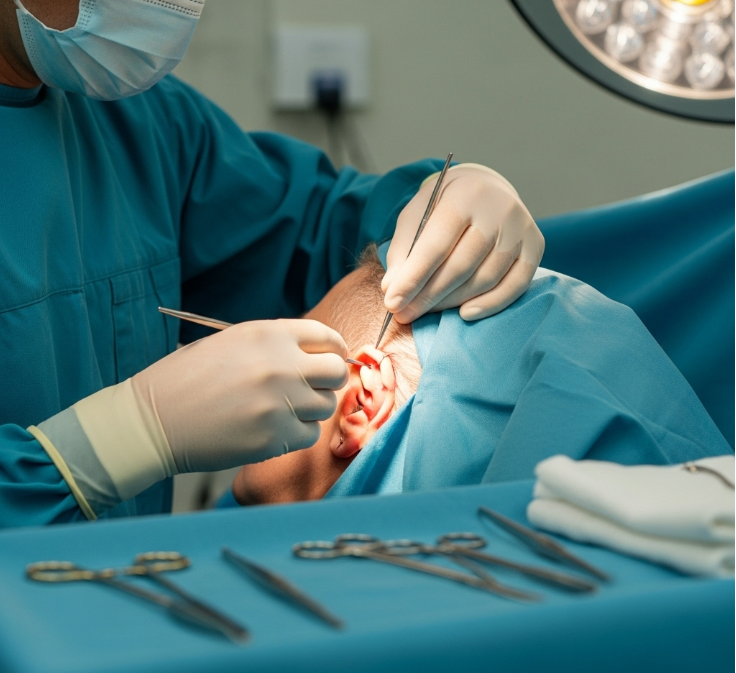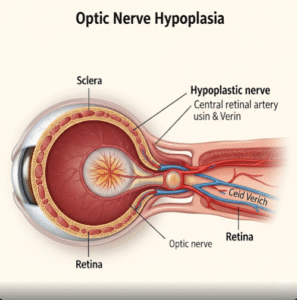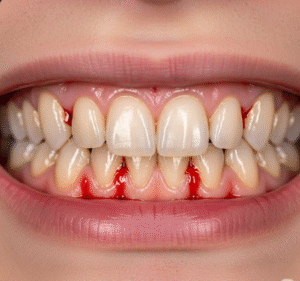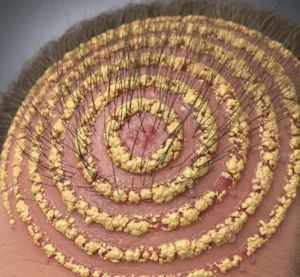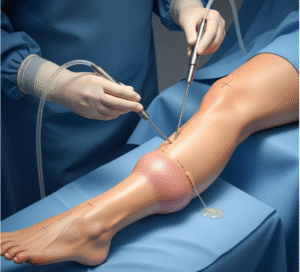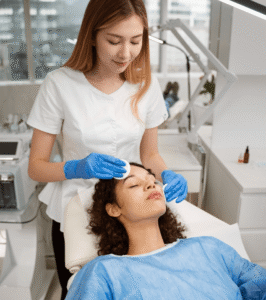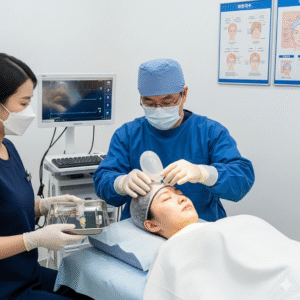What It Is
Ear reduction surgery, also known as macrotia surgery, is a cosmetic procedure that reduces the size of overly large ears. It involves reshaping, trimming, or repositioning ear cartilage and skin to create smaller, more proportionate ears that balance with the rest of the face.
In Korea, ear reduction surgery is performed with refined microsurgical techniques that prioritize natural outcomes and minimal scarring. Surgeons often combine ear reduction with ear pinning (otoplasty) for patients who also have prominent ears, creating both size reduction and improved ear positioning.
Why It’s Done
Cosmetic Purposes:
- Reduces ears that appear too large or disproportionate to the head
- Corrects elongated or stretched ear shape
- Creates better facial harmony by balancing ear size with facial features
- Enhances self-confidence in patients who are self-conscious about ear size
Corrective Purposes:
- Addresses congenital ear deformities such as macrotia
- Repairs stretched or elongated ears caused by trauma or prior surgeries
Patient Considerations:
- Common among adults and teens once ear growth is complete (usually after age 6–7)
- Popular with patients seeking subtle yet permanent improvements
- Best suited for healthy, non-smoking individuals with realistic expectations
Alternatives
- Ear Pinning (Otoplasty): Repositions ears closer to the head without reducing size
- Earlobe Reduction: Focuses only on large or stretched earlobes
- Non-Surgical Camouflage: Hairstyles or accessories to hide ear size, but no permanent correction
Preparation
Before ear reduction in Korea, patients typically undergo:
- Consultation: Ear measurements and symmetry assessment
- Medical Screening: General health evaluation and surgical planning
- Lifestyle Adjustments: Avoid smoking, alcohol, and blood-thinning medications before surgery
- Anesthesia Discussion: Local anesthesia with sedation is common; general anesthesia may be used for complex corrections
How It’s Done
Type: Surgical, outpatient procedure
Duration: 1.5–3 hours, depending on complexity
Procedure Steps:
- Incisions are made behind the ear or along natural folds to hide scars
- Excess cartilage and skin are carefully removed to reduce ear size
- Ear is reshaped and sutured for symmetry and natural contour
- Dissolvable or fine stitches are placed to close incisions
Hospitalization: Outpatient surgery; patients return home the same day
Recovery
- First Week: Swelling and mild bruising, managed with medication and bandages
- Dressings: A protective headband or bandage may be used to support healing
- Downtime: Most patients resume normal activities within 5–7 days
- Final Results: Stable after 1–2 months; scars fade significantly over time and are hidden in natural creases
Possible Complications
- Swelling, bruising, and temporary soreness
- Infection at the incision site (rare with proper aftercare)
- Asymmetry if one ear heals differently
- Visible scarring (minimized with hidden incision placement)
- Overcorrection or undercorrection requiring revision in rare cases
Treatment Options in Korea
Diagnosis
Korean clinics focus on precision through:
- Ear Measurements to determine degree of reduction needed
- Facial Harmony Analysis to balance ears with other features
- Consultations with cosmetic surgeons for customized surgical planning
Medical Treatments
For patients not ready for surgery:
- Non-surgical camouflage using hairstyle adjustments or accessories
- Laser or skin tightening for mild earlobe elongation (limited effectiveness)
Surgical or Advanced Therapies
- Standard Ear Reduction (Macrotia Surgery): Reduces overall ear size
- Earlobe Reduction: Specifically for stretched or enlarged earlobes
- Combination with Otoplasty: For patients with large, protruding ears
- Revision Surgery: Corrects prior unsatisfactory ear procedures
Rehabilitation and Support
- Post-op follow-up visits to monitor healing and symmetry
- Scar management therapies like silicone gel or laser treatments available in Korean clinics
- International patient services: translation, recovery support, and personalized aftercare

